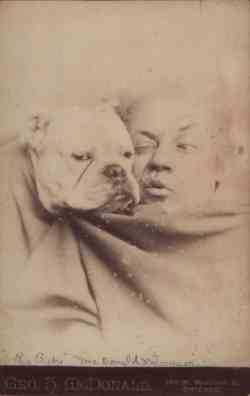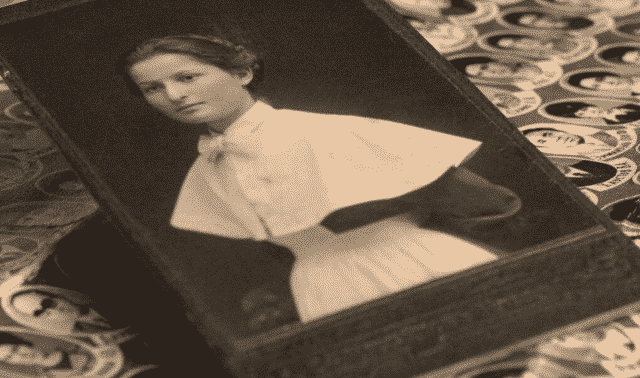
Those aren’t the only images our ancestors collected. They purchased photographs of local landmarks, Civil War heroes, royalty and theatrical personalities. Men, women, boys and girls collected images that appealed to their interests, added them to a photograph album and showed them off when they had company. My children do that with trading cards, and our ancestors used photographs in a similar way. Even if these images don’t depict family members, you can still learn something about your ancestors by studying them. Start by asking yourself these questions as you analyze your mystery photos.
Is it a family portrait?
Terri Mahar found this portrait, with the photographer’s imprint “Geo. H. McDonald, 289 W. Madison St., Chicago,” in a group of unidentified family photographs, which she inherited from a relative. While she has a McDonald line, she’s not sure if she’s related to the photographer of this scene. This might be a photograph bought merely for entertainment, not to commemorate family. Handwritten on the image is “Rca Baby” and “McDonald & Towser.” It appears that the photographer posed with his dog Towser. Why? Who knows. Pet owners have posed with their animals since the beginning of photography. In trying to imitate the look on his dog’s face, McDonald created a picture that was funny enough to be sold through a distributor. It was probably printed in limited quantity.
How did it get there?
The question isn’t who is in the picture, but how it became part of Mahar’s family photo collection. It’s possible that someone in her family purchased the picture in Chicago, or that a friend sent it to a relative as a joke. Perhaps the family owned a similar breed of dog. Mahar should look for proof of a trip to Chicago, a note from the sender, or a picture of the family with their pet.
Who owned it?
According to William C. Darrah’s Cartes de Visite in Nineteenth Century Photography (self-published, out of print), chocolate-colored card stock was popular between 1877 and 1887. This 10-year time frame allows Mahar to narrow the possible owners to those living in that time period.
Whom does it depict?
The caption tells us who is in this picture. To find out if McDonald and his dog are famous, or if a similar image exists, I typed their names into search engines such as Google. Unfortunately, their names didn’t turn up.
If the image remains a mystery, a few books can help. Darrah’s book has a wide variety of photographs to use for comparison, and The Photographic Experience 1839-1914: Images and Attitudes by Heniz K. Henisch and Bridget A. Henisch’s (Pennsylvania State University Press, $120) explores the history of photography and how it was used.



